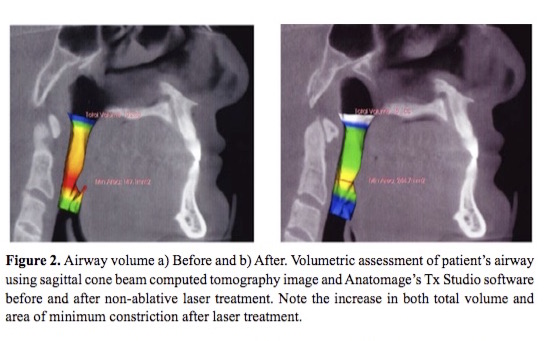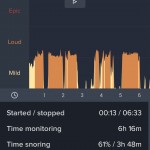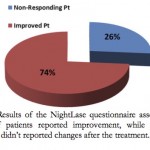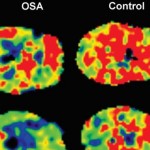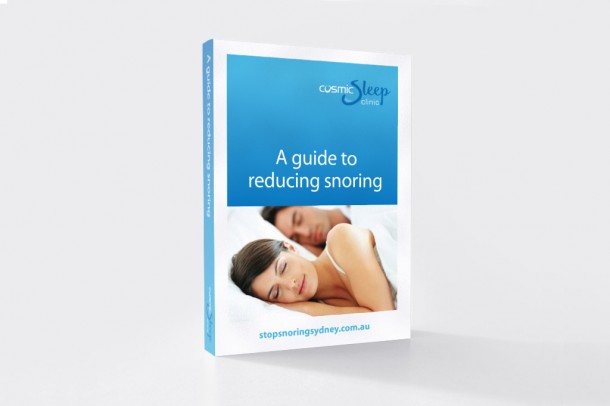Background: Sleep disordered breathing, specifically obstructive sleep apnea (OSA) is due to constriction of the oropharyngeal airway during sleep and has major public health implications. By conservative estimates, 3% of the adult population are suffering from OSA characterized by sleep deprivation, fatigue during the day and somnolence. the most common treatment for sleep apnea is continuous positive airway pressure (CPAP). However, CPAP does not eliminate the cause of OSA.
Methods: The goal of this prospective pilot study was to evaluate the changes of the total airway volume and most constricted area of the oropharyngeal airway using a non-ablative laser procedure. Cone beam computed tomography (CBCT) scans were obtained from seven patients enrolled in the study. Airway volume measurements were calculated before and after laser treatment using 3D volumetric software.
Results: The photothermic effects of a non-ablative laser procedure increased the mean total airway volume from 10.23 ± 0.94 mL to 12.54 ± 1.01 mL (p=0.0179), and the minimum cross-sectional area from 109.7 ± 20.6 mm2 to 142.4 ± 29.2 mm2 (p=0.0484) approximately 12 weeks post-laser treatment.
Conclusions: Non-ablative laser therapy may be a promising non-surgical treatment modality for increasing the oropharyngeal airway volume, especially the most constricted area.
Clinical implications: The results of this pilot study demonstrate that photothermal energy applied to the pharyngeal and palatal soft tissues may prove to be beneficial in the non-surgical management of sleep disordered breathing, especially the CPAP intolerant individual.

